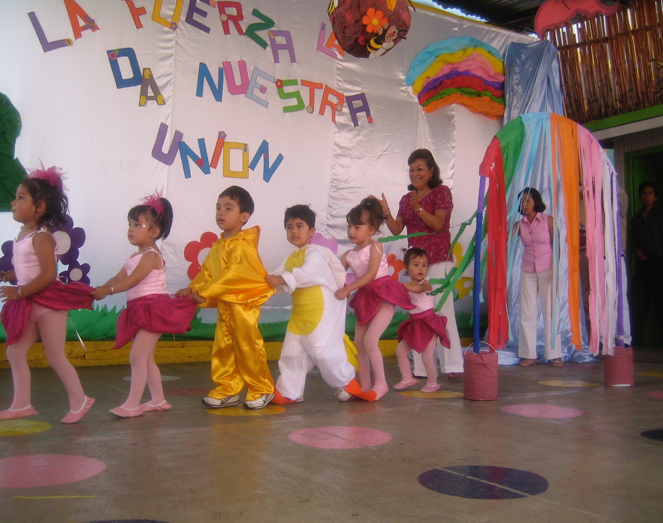Faculty Spotlight: Dr. Naomi Shin
June 15, 2020

Dr. Naomi Shin is Associate Professor in the Department of Linguistics and Department of Spanish and Portuguese.Her primary areas of research are: 1) Spanish in the United States and how it is shaped by bilingualism and language contact, and 2) the acquisition of Spanish during childhood (among both monolingual and bilingual children).
What region of Latin America/Iberia do you study? Why?
My research interests (bilingualism, child language acquisition) lead me to examine linguistic patterns across the Spanish-speaking world. Some of the communities I've focused on include Spanish speakers in New York City who hail from the Dominican Republic, Puerto Rico, Cuba, Mexico, Ecuador, and Colombia. As a New Yorker, language and dialect contact phenomena in New York are near and dear to me. I have also studied linguistic patterns among children and adults in Querétaro and Oaxaca, Mexico. In Oaxaca I was not only a researcher, but also a parent in the school community. I'm including a photo that I often put on research posters. In it, the smallest child is my daughter, who is now almost 12!
More recently, I’ve turned my attention to New Mexico. Much of my current research focuses on bilingual children's developing grammars. I find this research very exciting for its potential to not only increase our understanding of how language develops in bilingual children, but also to inform our policies and practices in educational contexts. For example, Jill Morford and I secured a McCune Foundation grant to examine whether a commonly used pre-K language assessment is appropriate for our multilingual and multicultural population here in New Mexico. We found that the assessment placed Spanish-English bilingual children at a disadvantage. This type of work provides an important application for the research we do on bilingual children's grammars: the more we understand, the better we can serve the children in our communities.
What has been your path to becoming a professor?
I honestly didn't think I'd end up being a professor when I started studying Linguistics. After graduating with a BA in English, I moved to Spain where I taught English for two years. Then I spent two years teaching Spanish in a public school in NYC. Next I moved to Peru. In other words, I spent much of my early to mid-20's living abroad. When I finally decided to return to New York, I took two Linguistics classes at the CUNY Grad Center as a non-matriculated student just to try it out. I knew I loved linguistic patterns, but I didn't know much about the field. The professors at the Grad Center convinced me to stay and do the PhD, and that was that! I never looked back. I had found my career. My background in teaching, coupled with my experience doing linguistic research on Spanish, helped me land my first tenure-track position at the University of Montana. I left Montana for New Mexico because I was thrilled to join two UNM Departments with such outstanding linguists.
What motivates you in your current work/research?
One of the most exciting parts of my job is mentoring students. It is a wonderful experience to watch students grow and become scholars. We have recently established the Lobo Language Acquisition Lab, which includes faculty and students doing research on child language. Through my child language research, I aim to advance our understanding of language development in all children, monolingual and bilingual alike. When we base our educational models and assessments on monolingual children, we do a great injustice to bilingual children. It is imperative that we increase our understanding of bilingual children's language development and share our findings with stakeholders, such as teachers and administrators. I am also passionate about dispelling widespread myths about bilingualism. Unfortunately, many people think that bilingualism slows children down in school, but research shows the exact opposite, provided that there is enough support for the minority language. There are other widespread misunderstandings that I hope to address in my work. Many people think that there's a correct way to speak and that the so-called "standard" dialect is superior to other dialects. Too often college-level grammar classes reinforce this idea, which ultimately promotes linguistic prejudice. In an attempt to address this issue, I developed a sociogrammar curriculum and textbook that teaches about Spanish grammar in a way that emphasizes the social underpinnings of language. Students examine why some varieties of Spanish are considered prestigious while others are not, drawing on current and historical sociopolitical contexts, all while learning grammatical terminology and how to identify categories and constructions in Spanish.
Please describe a Latin American/Iberian role model that inspires you. This can be a historical or contemporary figure or someone you know.
The Latin American scholar that has inspired me the most during my career is Ricardo Otheguy, who was born in Cuba and came to the U.S. at age 15. Professor Otheguy is brilliant and one of the most persistent and hardworking people I know. His work is innovative and insightful. He writes eloquently and clearly. He is also generous with his time and has dedicated much of his life to working with his students. He cares deeply about community.
Please describe one piece of advice you have for young scholars in the field of Latin America/Iberia.
Don't give up. Being in academia means your work is constantly evaluated. Learn to take criticism well and to use it to improve your work. Work hard, but also try to enjoy the ride! And always remember the reasons you got into this field. I'm guessing it's because you truly love what you do. If you hold onto that, you will enjoy your career and will be better equipped to weather even the toughest storms.
